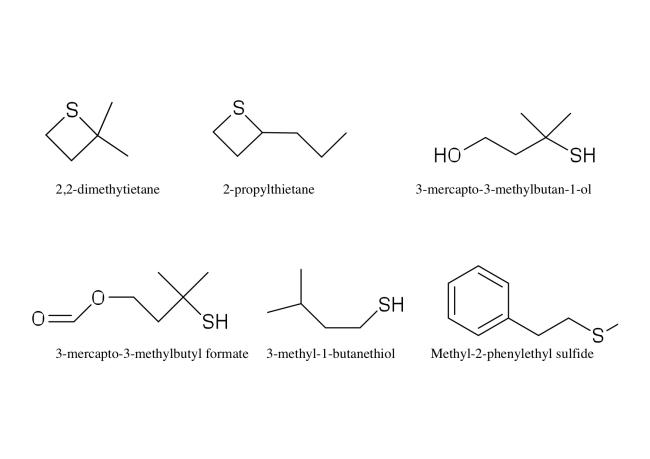Human subjects
A total of 12 healthy human subjects, 6 males and 6 females of 20-40 years of age participated in the study. The average age of the males was 29.3 years and that of the females was 30.3 years.
Odorants
A set of six odorants known to be components of mammalian predator odors was used:
2-propylthietane: This odorant has been identified as a component of stoat and ferret anal gland secretion.
2,2-dimethylthietane: This odorant has been identified as a component of the anal gland of mink, ferret, and polecat.
3-mercapto-3-methylbutan-1-ol: This odorant is known as a putative cat pheromone and has also been found in bobcat urine.
3-mercapto-3-methylbutyl formate: This odorant is known as a putative cat pheromone and has also been found in cat urine.
3-methyl-1-butanethiol: This odorant is known as a component of the defensive spray of striped and hooded skunk.
Methyl-2-phenylethyl sulfide: This odorant has been identified as a component of the anal gland secretion of mink and polecat.


Experimental procedure
For each odorant, a geometric dilution series in 14 steps was prepared, starting with a stem solution of 1:1,000 (highest concentration), and progressing by a factor of 5. Stem dilutions were designated step 1, and subsequent dilutions step 2, 3, and so forth.
A 20 ml aliquot of each odorant was presented in a 250 ml HDPE squeeze bottle.
Olfactory detection thresholds were determined using a triangular test procedure in which subjects were presented with three randomly arranged bottles, two of which contained pure diluent and the third the stimulus.
Testing followed an ascending staircase procedure, that is, starting with low concentrations that were stepwise increased.
Testing was repeated in five sessions in total for each subject.
Responsible for this page:
Director of undergraduate studies Biology
Last updated:
05/21/12
